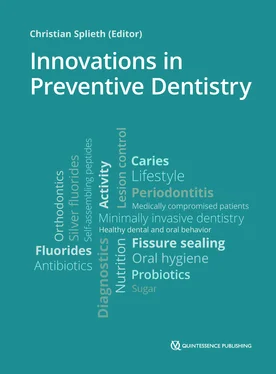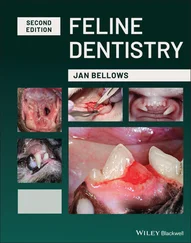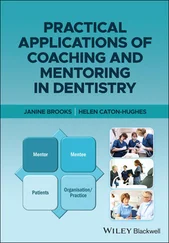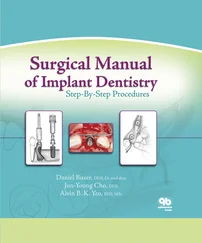18.Pine CM, Adair PM, Nicoll AD, et al. International comparisons of health inequalities in childhood dental caries. Community Dent Health 2004;21(1 Suppl):121–130.
19.Fontana M, Gonzalez-Cabezas C. Evidence-based dentistry caries risk assessment and disease management. Dental Clin North Am 2019;63:119–128.
20.Ekstrand K, Qvist V, Thylstrup A. Light microscope study of the effect of probing in occlusal surfaces. Caries Res 1987;21:368–374.
21.ICDAS Foundation. International Caries Classification and Management System (ICCMS). https://www.iccms-web.com/. Accessed 4 September 2019.
22.Nyvad B, Machiulskiene V, Baelum V. Construct and predictive validity of clinical caries diagnostic criteria assessing lesion activity. J Dent Res 2003;82:117–122.
23.Nyvad B, Machiulskiene V, Baelum V. Reliability of a new caries diagnostic system differentiating between active and inactive caries lesions. Caries Res 1999;33:252–260.
24.Bin-Shuwaish M, Dennison JB, Yaman P, Neiva G. Estimation of clinical axial extension of Class II caries lesions with ultraspeed and digital radiographs: an in-vivo study. Oper Dent 2008;33:613–621.
25.Heinrich-Weltzien R, Haak R, Buchalla W, Kühnisch J. Kariesdiagnostik - Eine Herausforderung für den Zahnarzt? DDZ 2008;117:160–168.
26.Winand C, Shetty A, Senior A, et al. Digital imaging capability for caries detection: a meta-analysis. JDR Clin Trans Res 2016;1:112–121.
27.Schwendicke F, Dörfer CE, Schlattmann P, Foster Page L, Thomson WM, Paris S. Socioeconomic inequality and caries: a systematic review and meta-analysis. J Dent Res 2015;94:10–18.
28.Alkilzy M, Santamaria RM, Schmoeckel J, Splieth CH. Treatment of carious lesions using self-assembling peptides. Adv Dent Res 2018;29:42–47.
29.Walsh T, Worthington HV, Glenny A-M, Marinho VC, Jeroncic A. Fluoride toothpastes of different concentrations for preventing dental caries. Cochrane Database Syst Rev 2019;3:CD007868.
30.Twetman S. Prevention of early childhood caries (ECC): review of literature published 1998-2007. Eur Arch Paediatr Dent 2008;9:12–18.
31.Ekstrand KR, Christiansen MEC. Outcomes of a non-operative caries treatment programme for children and adolescents. Caries Res 2005;39:455–467.
32.Ekstrand KR, Christiansen MEC, Qvist V. Influence of different variables on the inter-municipality variation in caries experience in Danish adolescents. Caries Res 2003;37:130–141.
33.Alkilzy M, Berndt C, Meller C, Schidlowski M, Splieth C. Sealing of proximal surfaces with polyurethane tape: a two-year clinical and radiographic feasibility study. J Adhes Dent 2009;11:91–94.
34.Abdullah Z, John J. Minimally invasive treatment of white spot lesions--a systematic review. Oral Health Prev Dent 2016;14:197–205.
35.Santamaría RM, Innes NPT, Machiulskiene V, Schmoeckel J, Alkilzy M, Splieth CH. Alternative caries management options for primary molars: 2.5-year outcomes of a randomised clinical trial. Caries Res 2018;51:605–614.
36.Gruythuysen RJM, van Strijp AJPG, van Palestein Helderman WH, Frankenmolen FW. Niet-restauratieve behandeling van cariës in het melkgebit: doelmatig en kindvriendelijk. Ned Tijdschr Geneeskd 2011;155:A3489.
37.Chibinski AC, Wambier LM, Feltrin J, Loguercio AD, Wambier DS, Reis A. Silver diamine fluoride has efficacy in controlling caries progression in primary teeth: a systematic review and meta-analysis. Caries Res 2017;51:527–541.
38.Fejerskov O, Kidd EAM. Dental Caries: The disease and its clinical management, 2nd ed. Oxford: Blackwell Munksgaard, 2008.
39.Kidd E. The implications of the new paradigm of dental caries. J Dent 2011;39(Suppl 2):S3–S8.
40.Schwendicke F, Frencken JE, Bjørndal L, et al. Managing carious lesions: consensus recommendations on carious tissue removal. Adv Dent Res 2016;28:58–67.
2
Understanding periodontitis
Daniela Hoedke, Henrik Dommisch
Periodontitis is a complex inflammatory human disease. According to the World Health Organization (WHO), periodontitis is considered as a chronic noncommunicable disease (NCD), and it shares social determinants and risk factors with other NCDs such as cardiovascular diseases, diabetes mellitus, cancer, and chronic pulmonary diseases, which account for two-thirds of the worldwide mortality. 1Thus, prevention of periodontal diseases, such as gingivitis and periodontitis, is highly important for each individuum.
This chapter will give an overview on the current knowledge of the epidemiology, etiopathogenesis, diagnosis, and preventive as well as therapeutic considerations in relation to periodontitis.
Periodontitis is one of the most prevalent oral diseases that can be prevented or treated. Figure 2-1 displays a representative image of a patient with periodontitis. In this specific case, the patient experienced tooth movement, tooth mobility, and generalized bleeding on probing. In addition to the resulting gaps between teeth, plaque deposits and discolored swollen gingival tissue are clearly visible in the interdental regions.
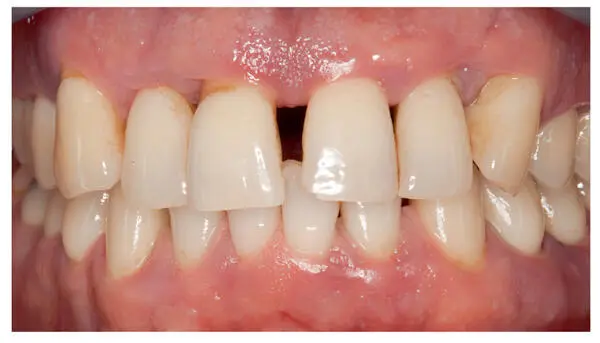
Fig 2-1Representative image of a patient with periodontitis. This image shows the sequelae of periodontal destruction due to periodontitis: tooth movement, tooth mobility, and generalized gingival inflammation. In addition to the resulting gaps between teeth, plaque deposits and discolored swollen gingival tissue are clearly visible in the interdental regions.
Epidemiology
Gingivitis and periodontitis are considered as two entities of the same biofilm-induced inflammatory disease that affects tissues around teeth. 2While gingivitis is a reversible inflammation of the gingiva around teeth without attachment loss, periodontitis comprises an additional nonreversible degradation of the periodontal apparatus, including the alveolar bone. In the worldwide population, approximately 12% exhibit severe forms of periodontitis, whereas approximately 50% show mild to moderate forms of periodontal disease. It is important to note that periodontitis represents the sixth most common human disease. 3,4According to the increasing world population and high numbers of retained teeth, the global burden due to severe periodontitis increased between 1990 and 2013 by 67%. 5This led to a higher economic load to the health care systems. 6
With respect to the distribution of periodontal disease in humans, periodontitis is an age-associated but not age-dependent disease, and the prevalence of periodontitis is strongly elevated between the third and fourth decade of life. 3,7Low socioeconomic status is associated with higher risk for periodontitis, and men suffer more from periodontitis compared to women. 8,9
Etiopathogenesis of periodontitis
The periodontium is a unique structure in the human body. While body surfaces, such as skin, mucosal tissues, hair, and nails, are constantly renewed, shed, and grow out, respectively, teeth exhibit a nonshedding surface. In addition, the tooth represents a direct connection between bone and the outside microbial environment, only separated by the junctional epithelium and connective tissue fibers. This allows for the dental plaque biofilm to develop and grow along the tooth surface into the gingival crevice, if not disturbed by routine oral hygiene procedures.
Microbial factors
Although periodontitis is a multifactorial disease, the central role to its pathogenesis refers to the interaction between the dental plaque biofilm, mainly consisting of well-organized bacteria adhering to the dental surface, and the immune inflammatory reaction of the host. 10
In this context, periodontal health represents a status of homeostasis associated with a symbiotic biofilm and an appropriate immune-inflammatory reaction of the host, including the presence of neutrophils and the expression of antimicrobial peptides. 11,12
Читать дальше
